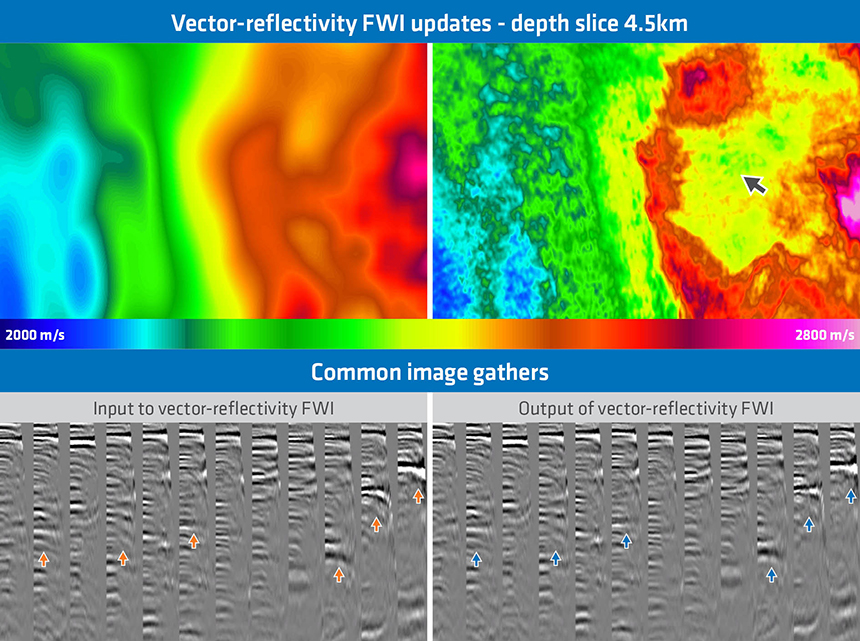Read the paper in full, here.
Using a velocity and vector-reflectivity wave-equation, the method requires no data manipulation or manual intervention and enables accurate model building using FWI over the full record, resulting in improved imaging and more accurate seismic data for interpretation and reservoir characterization. Key advantages of modeling reflectivity to drive full wavefield FWI include:
- Accelerated turnaround of full wavefield FWI model building
No need to construct a density model or have an accurate velocity model with hard boundaries - Only uses one wave-equation, not two as used in conventional Born modeling and perturbation theory approaches
- It is equivalent to the variable density wave-equation and no approximations are made
- Represents a step towards a fully automated inversion solution and enables a greater diversity of applications
No Seismic Data Manipulation Required
FWI models using only transmission energy can be limited in their depth penetration, and expensive acquisitions may be needed to extend the model over the usable seismic record. However, simultaneous use of reflections and transmission, free of any need to manipulate the seismic data, enables a cost-effective acceleration of deeper FWI updates, and a greater diversity of applications.
The new approach uses a reflectivity image taken directly from the seismic data as an auxiliary data set and is coupled with an innovative inverse scattering imaging condition which, when used together, significantly simplifies the use of reflections in reflection-inclusive FWI. The implementation updates both the velocity and reflectivity, maintaining accurate reflection modeling and representing a step towards a fully automated inversion solution.
Full Wavefield FWI Solves Deep Data Velocity Model Building
As the paper demonstrates, the use of a velocity and vector-reflectivity driven full wavefield FWI shows modeling equivalence to the variable density wave-equation in a synthetic study, and deep reflection updates using a field data example. The improvement in resolution is clear in the figure below which shows the updated model from the vector-reflectivity FWI compared against the input. The output FWI model has enhanced spatial resolution at depths of greater than 4.5 km, covering the multi-layered reservoir section. The common image gathers resulting from the migration using the new approach’s model show a clear improvement in gather flatness.

Using full wavefield FWI is essential for quantitative interpretation as an accurate velocity model reduces uncertainty in migrated data’s spatial positioning, whilst improving the focusing of seismic energy.
Contact a PGS expert
If you have questions related to our business please send us an email.